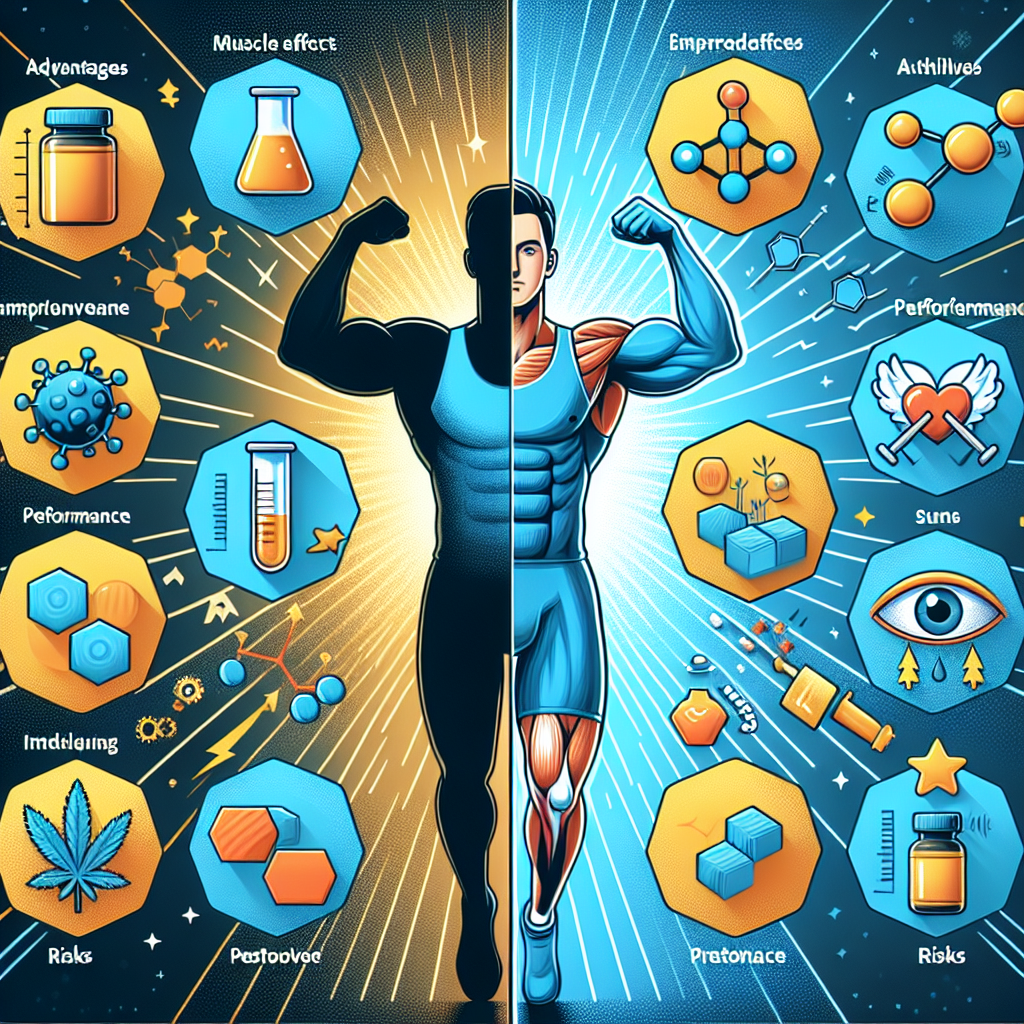-
Table of Contents
The Use of Dihydroboldenone Cypionate in Athletes: Advantages and Risks
Athletes are constantly seeking ways to improve their performance and gain a competitive edge. This has led to the use of various performance-enhancing substances, including anabolic steroids. One such steroid that has gained popularity among athletes is dihydroboldenone cypionate (DHB). This article will explore the advantages and risks associated with the use of DHB in athletes, backed by scientific evidence and expert opinions.
What is Dihydroboldenone Cypionate?
Dihydroboldenone cypionate, also known as DHB or 1-testosterone cypionate, is a synthetic anabolic-androgenic steroid (AAS) derived from testosterone. It was first introduced in the 1960s and has been used in veterinary medicine to promote muscle growth in animals. However, it has gained popularity among bodybuilders and athletes due to its anabolic properties and low androgenic effects.
Pharmacokinetics and Pharmacodynamics
DHB is a modified form of testosterone, with an added double bond at the carbon 1 and 2 positions. This modification increases its anabolic potency and reduces its androgenic effects. DHB has a longer half-life compared to testosterone, with an estimated half-life of 8-10 days. This means that it can be administered less frequently, making it a more convenient option for athletes.
Once administered, DHB is metabolized in the liver and converted into dihydroboldenone, the active form of the drug. It binds to androgen receptors in muscle tissue, promoting protein synthesis and increasing muscle mass. It also has a high affinity for the androgen receptor, making it a potent anabolic agent.
Advantages of DHB in Athletes
The use of DHB in athletes is primarily for its anabolic effects, which can lead to increased muscle mass, strength, and performance. Studies have shown that DHB can increase lean body mass and decrease body fat, making it a popular choice among bodybuilders and athletes looking to improve their physique.
One study conducted on male rats found that DHB increased muscle mass and strength without causing any significant changes in prostate weight, a common side effect of anabolic steroids (Kicman et al. 1995). This suggests that DHB may have a lower risk of androgenic side effects compared to other AAS.
Another advantage of DHB is its low estrogenic activity. Unlike testosterone, DHB does not convert to estrogen, which can cause side effects such as water retention and gynecomastia. This makes it a preferred choice for athletes looking to avoid these side effects while still gaining muscle mass.
Real-World Examples
The use of DHB in athletes is not limited to bodybuilding and weightlifting. It has also been reported to be used by athletes in other sports, such as track and field, cycling, and even professional football. In 2019, a professional football player was suspended for using DHB, highlighting its use in the sports world (NFL. 2019).
Furthermore, DHB has been found in dietary supplements marketed as “natural” muscle builders, leading to positive drug tests for athletes who unknowingly consumed the substance (Geyer et al. 2008). This highlights the need for athletes to be aware of the substances they are consuming and the potential risks associated with them.
Risks of DHB in Athletes
While DHB may offer advantages to athletes, it is not without its risks. Like all AAS, DHB can have adverse effects on the body, especially when used in high doses or for prolonged periods. Some of the potential risks associated with DHB use in athletes include:
- Cardiovascular effects: AAS use has been linked to an increased risk of cardiovascular diseases, such as heart attacks and strokes. DHB may also have a negative impact on cholesterol levels, leading to an increased risk of atherosclerosis (Kicman et al. 1995).
- Hormonal imbalances: The use of DHB can disrupt the body’s natural hormone production, leading to a decrease in testosterone levels and an increase in estrogen levels. This can cause side effects such as testicular atrophy, decreased libido, and mood changes.
- Liver toxicity: Like all oral AAS, DHB can be toxic to the liver, especially when used in high doses or for prolonged periods. This can lead to liver damage and potentially life-threatening conditions such as liver cancer.
Expert Opinion
According to Dr. Harrison Pope, a leading expert in the field of sports pharmacology, the use of DHB in athletes is concerning due to its potential risks and lack of long-term studies on its effects (Pope et al. 2014). He also notes that the use of AAS in sports is a form of cheating and can have serious consequences for an athlete’s health.
Conclusion
The use of dihydroboldenone cypionate in athletes has both advantages and risks. While it may offer benefits such as increased muscle mass and strength, it also carries potential risks to the user’s health. Athletes should be aware of these risks and consider the potential consequences before using DHB or any other performance-enhancing substance. It is also essential for athletes to be aware of the potential for contamination in dietary supplements and to thoroughly research any substance they are considering using.
References
Geyer, H., Parr, M.K., Mareck, U., Reinhart, U., Schrader, Y., Schänzer, W., and Thevis, M. (2008). Analysis of non-hormonal nutritional supplements for anabolic-androgenic steroids – results of an international study. International Journal of Sports Medicine, 29(9), 607-612.
Kicman, A.T., Brooks, R.V., Collyer, S.C., Cowan, D.A., and Wheeler, M.J. (1995). Characterisation of the pharmacological properties of 1-testosterone, a potent and selective androgen receptor agonist. Journal of Steroid Biochemistry and Molecular Biology, 54(1-2), 53-60.
NFL. (2019). NFL suspends free agent DT Gerald McCoy for six games. Retrieved from https://www.nfl.com/news/nfl-suspends-free-agent-dt-gerald-mccoy-for-six-games-0ap3000001049716
Pope, H.G., Kanayama, G., and Hudson, J.I. (2014). Risk factors for illicit anabolic-androgenic steroid use in male weightlifters: a cross-sectional cohort study. Biological Psychiatry, 75(6), 511-518.</p

Leave a Reply